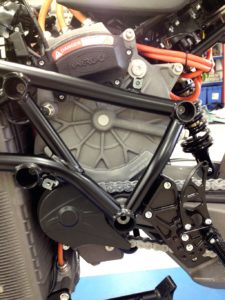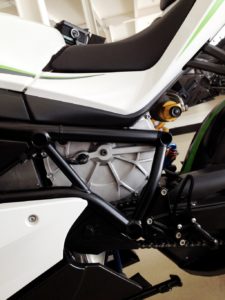The 3D Printing Industry news bulletin
CRP Technology releases Windform FR2, a new flame-retardant material for SLS
From design to reality: Windform® Composite Materials to go beyond 3D Printing
Additive manufacturing is evolving very quickly, powering the development of innovative, lightweight applications.
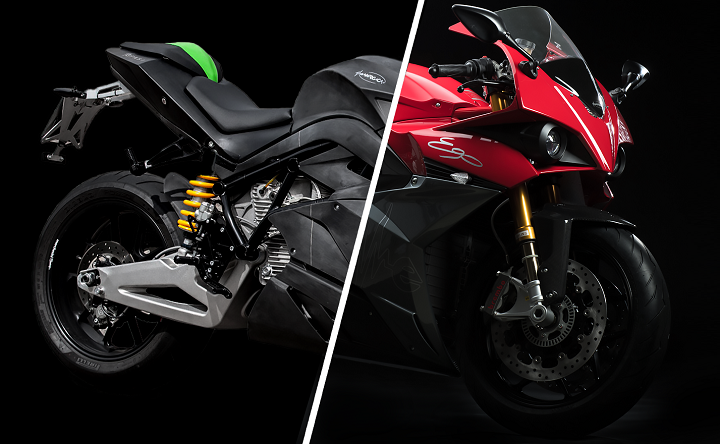
Energica Ego running prototype with several 3D printed parts in Windform® composite materials (starting point) and Energica Ego electric motorcycle homologated for street use (present day)
This growth has a major reason: advances in additive materials. According to many 2019 reports, the number of materials available for AM has more than doubled in the past five years, and the rules of manufacturing have been rewritten as the technical capabilities of these polymers met up with the opportunities that 3D printing offers in term of product development and low-volume parts production. Materials for professional 3D printing are completely changing traditional production schemes.
Amongst the most known and long-running high performance materials on market, there are Windform® TOP LINE range of Carbon or Glass fiber reinforced composite materials created by Italy-based CRP Technology.
Windform® TOP LINE composite materials are for selective laser sintering (SLS), an additive manufacturing technique that uses a laser as the power source to sinter powdered material from a 3D model.
Windform® TOP LINE are designed to offer full range of options, possibilities and features, from excellent thermal properties to resistance to high temperature, from high stiffness and excellent strength to reduced weight, just to name a few.
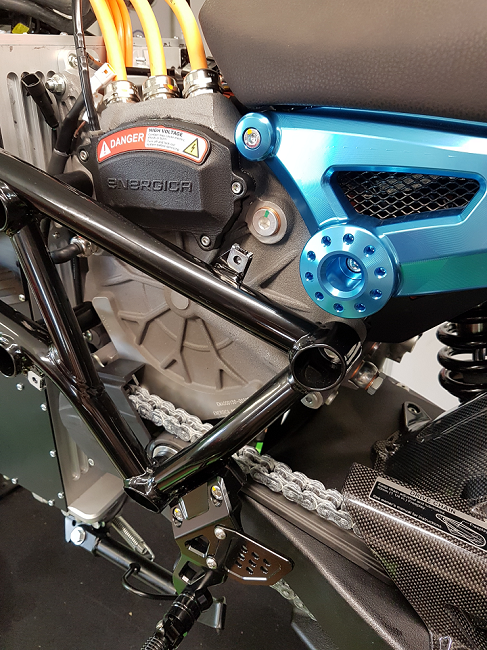
Eva EsseEsse9 3D printed terminal cover in Glass-fiber filled composite material Windform® LX 3.0 and 3D printed chain slider in Glass-fiber filled composite material Windform® GT
Examples concerning the wide range of uses of high performance composite materials and professional 3D printing, comes from Energica Motor Company, first Italian manufacturer of super-sport electric motorcycles and single manufacturer for FIM Enel MotoE World Cup.
World Cup.
Long-term technological partnership with CRP Technology enabled Energica to be on the market quickly, fueling innovation, accelerating the prototyping and product development phase.
All Energica motorcycles models currently on the market were created and engineered through the support of CRP Technology: its innovative and avant-garde solutions in the field of additive manufacturing technology have made Energica a unique model throughout the world.
“We relied on CRP Technology and their 3D printing department as they have the right composite material to meet every demand, especially for a project as complex as Energica electric motorcycles. I’m not referring to an ordinary motorcycle, but a high-voltage, high power electric motorcycle that has special needs. CRP Technology proved to be the right partner to support customers in their challenge,” explains Energica Motor Company CTO, Giampiero Testoni.
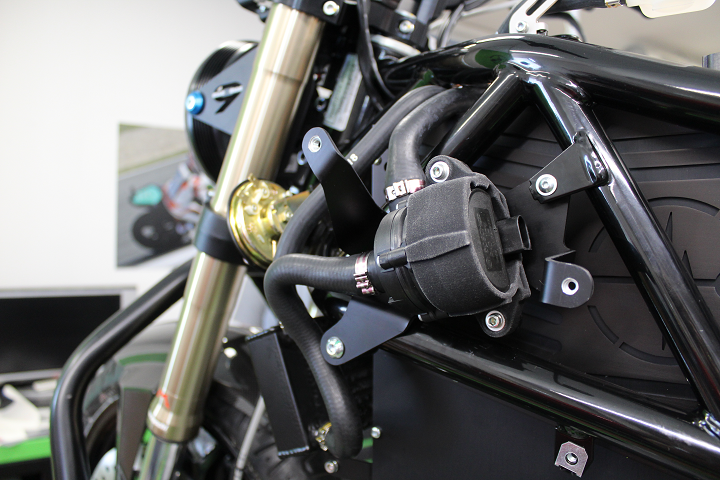
Eva EsseEsse9 3D printed water pump support realized in Windform® RL thermoplastic elastomer material for 3D printing
From the R&D and testing phases to pre-series, Energica motorcycles have been mounting many functional components 3D printed by CRP Technology.
Let’s consider the first model ever, Energica Ego which is “the most powerful and sophisticated electric motorcycle homologated for street use anywhere in the world” (from Energica website).
In the first prototype phase, several components of Energica Ego motorcycle such as aerodynamic parts, fairings, front and rear fenders, tail, were made by CRP Technology via professional 3D printing using Windform® XT 2.0 Carbon-fiber filled composite material from CRP Technology’s TOP-LINE range of high performance materials.
Dashboard support, rear mirrors and front fairing were made in Windform® SP Carbon fiber filled composite material.
Windform® TOP-LINE are production-grade materials. Their use is not limited to the prototype phase, but also short production runs. Let’s see some examples: Windform® XT 2.0 is nowadays used to produce the frontlight cover on the Energica Ego motorcycles currently on the market.

Eva EsseEsse9 3D printed terminal cover and 3D printed sprocket cover both in Glass-fiber filled composite material Windform® LX 3.0
This component isn’t the only one that CRP Technology is manufacturing for the Energica motorcycles that get to the world market: CRP Technology produces the electric motor terminal cover (for Energica Ego, Energica Eva EsseEsse9 motorcycles), turn signal indicators, sprocket cover (both for Energica Ego, Energica Eva EsseEsse9). These components are manufactured via selective laser sintering using Windform® LX 3.0 Glass-fiber filled composite TOP-LINE material.
The chain slider (for both Energica Ego, Energica Eva EsseEsse9) is manufactured by CRP Technology using the other Glass-fiber filled composite material from the TOP-LINE family: Windform® GT.
The water pump-support (for Energica Ego, Energica Eva EsseEsse9 motorcycles) is manufactured by CRP Technology in Windform® RL thermoplastic elastomer material for SLS.
CRP Technology partnered with Energica even on the development and construction of Ego Corsa, Energica’s electric racebike for the FIM Enel MotoE World Cup which is derived from the street-legal motorcycle Energica Ego.
World Cup which is derived from the street-legal motorcycle Energica Ego.
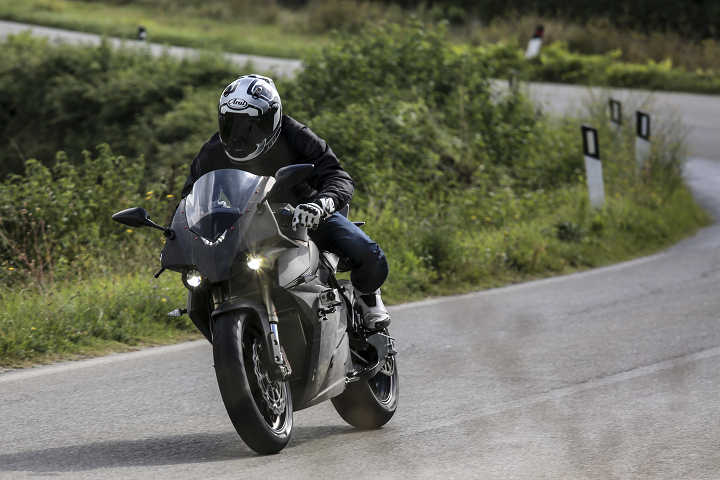
Energica Ego running prototype drives on the road: 3D printed dashboard support, rear mirrors, front fairings manufactured in Carbon fiber filled composite material Windform® SP
A first preview: Some recent components inside the Ego Corsa’s new battery are 3D printed using Windform® FR2, the newest and disruptive material from the Windform® TOP-LINE range. It is the first composite material for 3D printing which is Glass fiber-filled and flame retardant, FAR 25.853 and UL94 HB compliant.
The massive use of high quality 3D printing allows to fine tune the style (e.g. fairing) and, at the same time, allows to carry out specific test rides on the road.
This prerogative is not limited to the Automotive and Motorsports industry, as it is viable in all advanced sectors.
Learn more in CRP Technology’s white paper, available for download here.
The post From design to reality: Windform® Composite Materials to go beyond 3D Printing appeared first on 3DPrint.com | The Voice of 3D Printing / Additive Manufacturing.
Pioneering the Additive Manufacturing Revolution in the Aerospace and Avionics fields
CRP Technology has been among the first to import additive manufacturing technology to Europe, and has developed the Windform® TOP-LINE family of composite materials.
They are some of the international market’s most high-performance Carbon- or Glass- composite laser sintering materials, in use for more than 20 years in the aerospace, UAV, defense, avionics markets for the most demanding applications.
Therefore it is unquestionable that CRP Technology has been changing the rules of additive manufacturing, smashing records and setting models nowadays that apply to 3D printing with polyamide materials.
A clear sign of this continued performance is Windform® FR1 (FR stands for Flame Retardant), the new-born material from the Windform® TOP-LINE family of composite materials for additive manufacturing.
It is intended to become a game-changing material in the field of 3D printing for its uniqueness: it is the first Flame Retardant (UL 94 V-0 rated) material for additive manufacturing which is carbon fiber reinforced.
It is also passed the FAR 25.853 flammability tests successfully as well as the 45° Bunsen burner test.
“Only a few weeks from the launch of a new range of Windform® materials, the P-LINE for HSS technology,” commented Franco Cevolini, VP and CTO at CRP Technology. “I’m very proud to introduce a new revolutionary composite material from the Windform® TOP-LINE family of materials for laser sintering technology. Our aim is to constantly produce technological breakthroughs. With Windform® FR1 we can steer you toward the proper solution for your projects.”
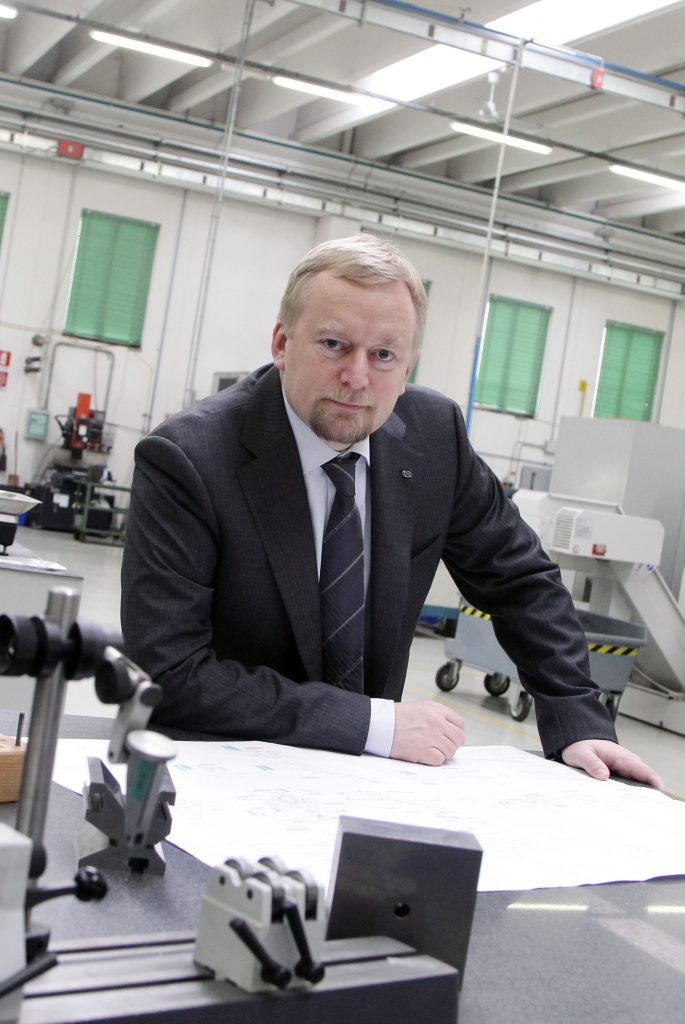
Franco Cevolini. Ph©Elisabetta Baracchi
“I’m firmly committed to solving one of the most important challenges, maybe the main one, for people who work in the 3D printing field “– added Cevolini – “the ability to ensure the performance and reliability of the AM process and materials. At CRP Technology and CRP USA we work extremely hard to control our process. We do testing on both equipment and materials on a regular basis. This kind of effort lets our customers understand that we are not just cranking out parts like a traditional rapid prototyping service bureau.”
Someone could say this technology and materials are expensive, but it is not correct especially in a long-term perspective. It is proven that using professional 3D printing and Windform® composite materials produce substantial cost savings considering the whole process performance.
“With professional 3D printing and Windform®” commented Cevolini – “the manufacturing process, from the design phase to product development, is optimized. Quality is not a cost, it is an investment”.
Aerospace and Avionics application spotlight
Not only the new-born Windform® FR1 material, but all the Windform® materials allow manufacturing of functional prototypes as well as finished, high-performance functional parts.
“Windform® materials from the TOP-LINE range of composite materials have some unique properties. Let’s consider, for example, Windform® XT 2.0: resistance to UV, low outgassing and its lightweight versus strength are some of the key characteristics that allow for it to replace a traditional material like Aluminium in some applications.”
The freedom of additive manufacturing allows the creation of more complex geometry, especially in the aerospace field.
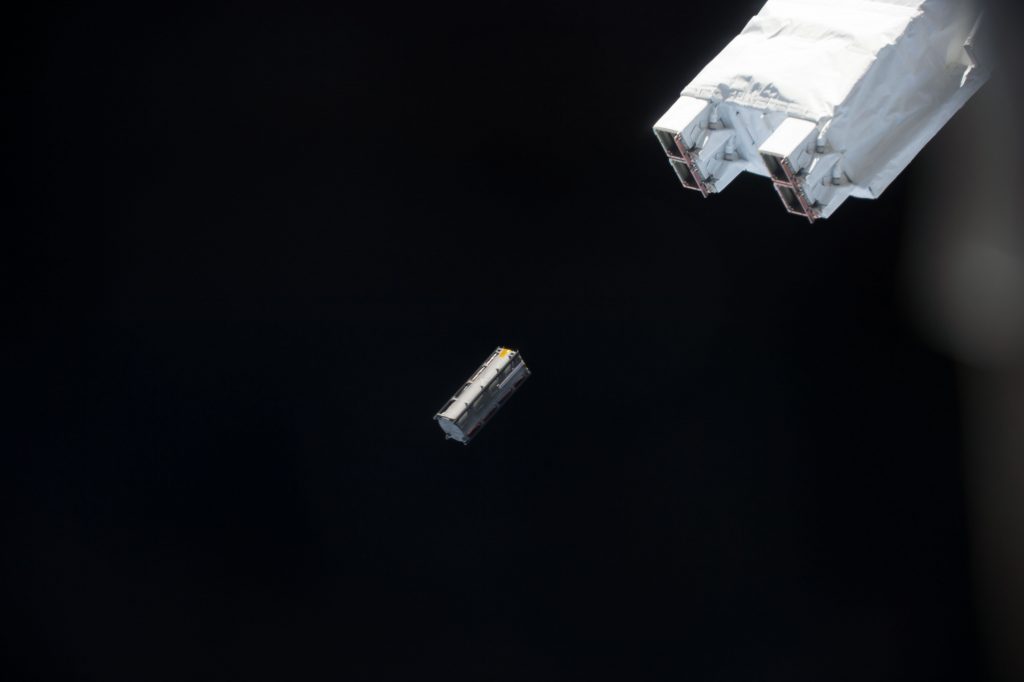
TuPOD deployed © JAXA NASA
Recently CRP USA , the U.S.-based 3D printing company partnered with CRP Technology, contributed to mark a new milestone in the small satellites arena with TuPOD, the innovative cubesat manufactured via laser sintering in Windform® XT 2.0. This ground breaking project was carried out by GAUSS, Teton Aerospace, Morehead State University. From a distance, the TuPOD looks relatively simple, but upon closer examination there are some areas in the design that would have been more difficult to accomplish with traditional manufacturing methods.
The significant performance of Windform® is creating new ways to invent and manufacture, while it is proving to be a viable option for the innovative design and high-performance features associated with advanced Aerospace applications.
“Leveraging 3D printing and Windform® composite materials properly has been a key advantage that our customers in the Space Industry have quickly adapted to. Whether it is entire structures or smaller components, we have been amazed at the creativity. The time to produce the parts is often dramatically less than through traditional methods.”
Progress has been also made in the avionics field: recently Windform® composite materials combined with laser sintering technology, have been used to manufacture some external parts of the wind tunnel model in 1:8.5 scale for the prototype of the new Leonardo Helicopter Division tiltrotor AW609, for a series of dedicated low-speed wind tunnel tests. (Designed, manufactured and assembled by Metaltech S.r.l., under supervision of Leonardo HD).

Tiltrotor-AW609. Courtesy Leonardo HD
These 3D printed parts highlight the perfect union between advanced 3D printing technology and Windform® high-performance composite materials. Thanks to the Windform® materials, it was possible to complete and test the model in the wind tunnel within a very short time, with excellent results and with high-performing mechanical and aerodynamic properties.
The 3D printed parts have been created by CRP Technology using Windform® XT 2.0 are nose and cockpit, rear fuselage, nacelles, external fuel tanks and fairings.
CRP USA also contributed to demonstrate the effectiveness of additive manufacturing and use of Windform® as a structural material for avionics applications: on behalf of Leonardo HD and under the control of ATI Co. – Newport News (the model supplier), CRP USA manufactured via laser sintering and Windform, the external fuselage and additional components for a new 1:6 model.

It was created for a high-speed wind tunnel test campaign at NASA Ames Unitary Plan 11 by 11 foot transonic wind tunnel, as part of a thorough review of aircraft behavior.
The model scale selected was 1:6 of the full scale in order to be fully compatible within the given constraints of the physical size of the NASA 11 by 11 tunnel.
The architecture of the new 1:6 model for transonic high-speed tests was very similar to the AW609 model but with some improvements in order to have the remote controls for the flaperons and elevator surfaces.
For the first time the Windform® XT 2.0 Carbon-composite material was used for an high speed model tested at NASA AMES facility.
Windform® TOP-LINE family of high-performance composite materials have passed NASA and European Space Agency (ESA) outgassing screening, suitable for aerospace applications:
- Windform® XT 2.0, Windform® SP both carbon-composite materials; Windform® LX 3.0, Windform® GT both glass-composite materials: have been tested in accordance to the ASTM E-595-07 standard, and passed with no issues
- Windform® XT 2.0 carbon-composite material: has been passed ESA screening outgassing tests in accordance with ESA TEC-QTE 7171 (based on ECSS-Q-ST-70-02C); it has been K-rated according to Japan Aerospace Exploration Agency (JAXA) outgassing test.
In addition:
- Windform® FR1 : has been rated V-0 according Flammability UL 94; it has passed the FAR 25.853 flammability tests as well as the 45° Bunsen burner test.
- Windform® XT 2.0, Windform® SP, Windform® GT, and Windform® LX 3.0: have been passed Flammability UL 94. They have been tested for flammability rating, and successfully obtained HB classification.
- Windform® LX 3.0 and Windform® SP: have been subjected to vacuum ultraviolet (VUV) testing and results report: “Windform® SP and Windform® LX 3.0 samples did not show degradation with VUV testing.”
3D Printing Combines with Other Technologies for Latest Energica Ego Component
 Following the progress of the CRP Group and its subsidiary Energica over the past few years has been exciting, as the companies work together to develop 3D printed electric superbikes such as the Eva, Ego, and Ego Corsa. The Ego made its public debut at CES at the beginning of 2016, and has wowed the public not only with its performance but with the advanced manufacturing that went into its creation: 3D printing, using Selective Laser Sintering and CRP’s Windform family of materials, and CNC machining.
Following the progress of the CRP Group and its subsidiary Energica over the past few years has been exciting, as the companies work together to develop 3D printed electric superbikes such as the Eva, Ego, and Ego Corsa. The Ego made its public debut at CES at the beginning of 2016, and has wowed the public not only with its performance but with the advanced manufacturing that went into its creation: 3D printing, using Selective Laser Sintering and CRP’s Windform family of materials, and CNC machining.
The Energica Ego continues to undergo development, and recently Energica engineers along with CRP staff worked together to focus on the motor housing, a complex, important component of electric motorcycles. From the beginning, the team worked to redesign the part in order to accommodate the rotor, stator, and speed reducer. The propulsion unit to be supported is flexible and compact enough that the Energica motor housing can be adapted to any vehicle, and the reducer is composed of a straight-cut gear train that adds strength along with simplicity of design. The structure holds the shaft and pinion and final drive to the wheel with a standard motorcycle chain.
To redesign the motor housing, the team had several requirements. The electric motor was heavy and needed to be balanced out by a lightweight housing, and because the motor generated high torque it required high resistance. The gears needed to be the correct size, and the materials and heat treatments would need to be carefully chosen.
 The first step was creating a functional prototype, which was done by CRP Technology. It was manufactured using SLS technology and Windform LX 2.0, a composite polyamide-based material reinforced with a new-generation glass fiber now replaced by Windform LX 3.0. The prototype allowed the technicians to validate the 3D CAD drawing and helped Energica mechanics to work on the motorcycle’s development. It was mounted directly on the motorcycle, allowing for a full check of potential issues related to the assembly of each part.
The first step was creating a functional prototype, which was done by CRP Technology. It was manufactured using SLS technology and Windform LX 2.0, a composite polyamide-based material reinforced with a new-generation glass fiber now replaced by Windform LX 3.0. The prototype allowed the technicians to validate the 3D CAD drawing and helped Energica mechanics to work on the motorcycle’s development. It was mounted directly on the motorcycle, allowing for a full check of potential issues related to the assembly of each part.
“Being able to touch the 3D printed prototype of the motor housing was very important for us, as we are the ones who manage fit and assembly,” stated the Energica technicians. “For example, we have been able to study first-hand if the component can be assembled and disassembled easily; if all the parts can be reached; if it is possible to use standard wrenches … We must put ourselves in the shoes of those who will handle the motorcycle on the market: customers, dealers and mechanics of authorized workshops.
“Designing and creating a motorcycle is a team effort between designers, technicians and engineers. We deal with technological/engineering, design, functionality issues; the final aim is to match the work of the three sectors. The prototypes created in Windform 3D printing allow you to study the various elements, and to improve them where required by shortening development time and reducing costs.
“Through the combination of LS technology and Windform composite materials, it is possible to ensure the ongoing study of the components. The prototypes made in Windform are 100% functional, we can mount them on the motorcycle and test them on the road and on the track. We do not waste time which, at this stage, is very precious.”
The next step, after the validation of the CAD file, involved the creation of an aluminum prototype. The requirements included performance, light weight, and resistance to temperature. Using aluminum alloys 6082 and 7075, CRP Meccanica CNC machined the part with its 5-axis production systems. The central part, which was the largest, originally had a pass-through window to allow the motor to be positioned inside. Each side was a half shell, and one of the two halves held the gearing housing, sealed in with a cover. The other half housed the pinion and oil pan.
“This phase has been completed in a short time,” the technicians stated. “CRP supported us very much, and we did not have any problem with the component, both during the bench tests and the assembly on the motorcycle: the tolerances required were very complicated and tight, as the project included two rows of bearings (those on the motor, plus the outer ones to support the output shaft). Later, we were able to validate the road-going prototype.”
The next phase involved the realization of models for pre-series. The component was manufactured using traditional sand casting, with the same alloy used in the metal prototyping phase. The production of the part was truly a team effort – between Energica and CRP, and between three different technologies that worked together to produce a strong, lightweight and high-performing component.
Discuss this and other 3D printing topics at 3DPrintBoard.com or share your thoughts below.
[Images: CRP Group]

